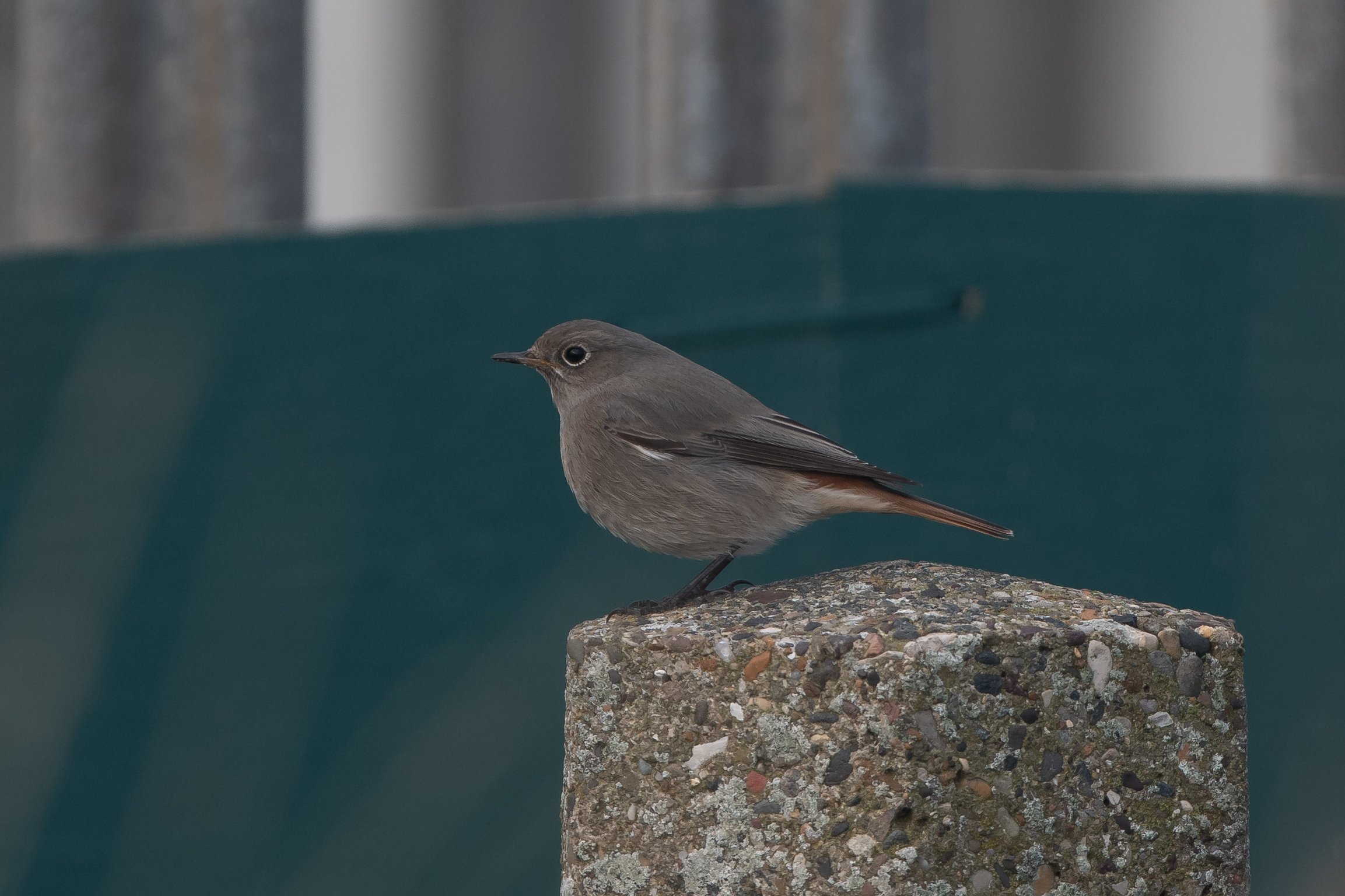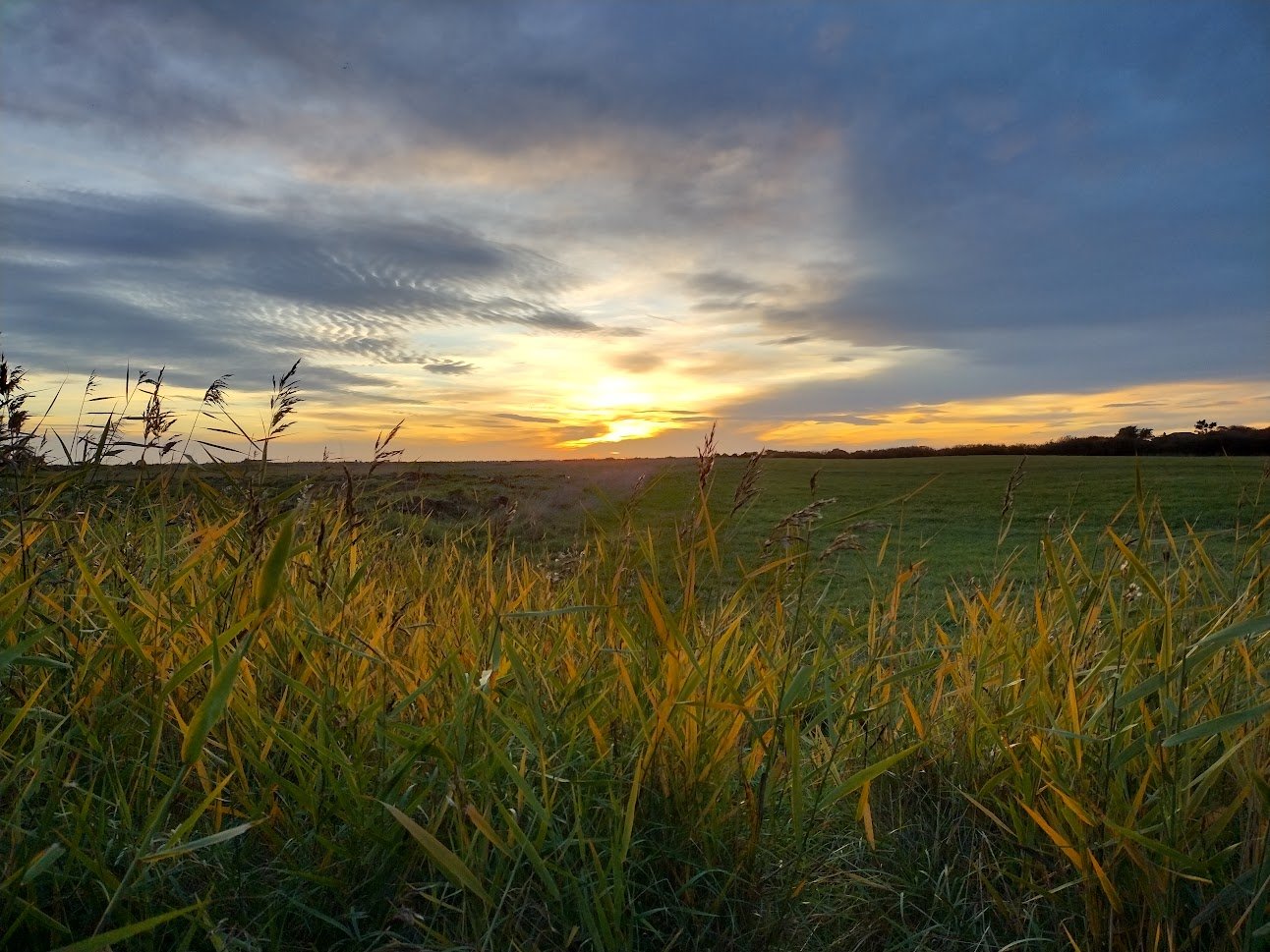I was watching Twitter nervously on Thursday with rare bird after race bird along with hundreds of common migrants being reported at Spurn.
I was able to cash in one of my floating holidays for the Friday and just hoped that some of the birds would stay.
I arrived just after 7 to the sound of robins and gold rests and a sense of magic was in the air.
No sooner had I set up the caravan, the radio crackled with the news that the previous days red-flanked bluetail was still present in Easington.
Within a minute of arriving there it was hopping around on the driveway of the old school.
Red-Flanked Bluetail
Soon after news of a singing Pallas’s warbler on the track on the south side of the gas terminal came over the airwaves. After a couple of attempts it showed very nicely and at times was in full song- something that I’ve never heard before.
Pallas’s Warbler
Pallas’s Warbler
A wander down Beacon Lane produced lots of crests and the air was thick with the seeeep of redwings flying overhead and diving in and out of the bushes. Along the cliff top we’re at least 3 black redstarts and a lovely male stonechat.
Black Redstart
Black Redstart
A look in Crown and Anchor car park produced an all-too-brief eastern type lesser white throat. Church Field produced very brief views of a Mealey redpoll.
Robin
A ride back up to Easington in the afternoon produced nice views of a second Pallas’s warbler on Vicars Lane.
Pallas’s Warbler
News of the little bunting at the Southend of the breach had me heading south.
It was a long trek over the sand but didn’t take long to locate the bunting and at times was as close as about 8ft.it was fascinating to watch it scurrying beneath the grasses in search of seeds coming out into full view only occasionally.
Little Bunting
Little Bunting
I managed to beat the rain back to the car and so day 1 came to an end.
Saturday dawned bright and breezy and I suspected that a lot of the birds may have moved on- wrong! All of the scarce birds were still present.
We had lovely views of a redwing from the caravan as well as plenty of crests and robins in the garden
We decided to have a wander down to the point. The most obvious feature of the morning was the visible migration. Wave after wave of finches, skylarks and meadow pipits were all streaming south.
We saw lots of goldcrests and chaff inches on the way down and there were even more birds at the point.
The best bird was a distant great grey shrike and the parade ground held a black redstart, fieldfares, redwings and song thrush.
A few late swallows were heading south accompanied by a house Martin. The highlight of the walk back was a great white egret flying south over the narrows.
Chiff-chaff
I had a trip up to Easington in the afternoon and managed more views of the red-flanked bluetail and brief views of the Pallas’s warbler. I spent the last hour looking for the red-flanked bluetail at the football pitch but to no avail.
We watched the sun go down back at the caravan listening to a classic Autumn chorus of robins, blackbirds and redwings. A fox crept close to the caravan in the last rays of light.
Sunday morning was overcast and it was apparent that a lot of birds had moved out.
Black Redstart
I looked again for the RFB at the football pitch and again it was a no-show.
I headed back to Kilnsea for a wander down Beacon Lane. Just a few thrushes but the walk back along the cliff top produced a couple of black redstarts and a stonechat.
There were still lots of birds around including good numbers of bramblings.
I got back for breakfast just in time to beat the rain, it didn’t put off a very mobile stoat giving great views as it made its way through the garden.
I went to canal scrape hide to sit out a torrential downpour that lasted nearly 3 hours. Despite the rain it was quite busy with brief and distant views of a jack snipe as well as a ring ouzel, black and bar-tailed godwits and a nice grey wagtail sometimes giving great views.
Grey Wagtail
Grey Wagtail
Grey Wagtail
Dunlin
Black-Tailed Godwit
Snipe
Redshanks
Snipe
Black-Tailed Godwit
Snipe
Ring Ouzel
The day finished in glorious sunshine and a nice yellow-browned warbler in the Crown and Anchor car parkas well as lots of goldcrests.
Yellow-Browed Warbler
Yellow-Browed Warbler
Yellow-Browed Warbler
Yellow-Browed Warbler
Yellow-Browed Warbler
Yellow-Browed Warbler
Yellow-Browed Warbler
At last Autumn has properly arrived creating classic east coast conditions. With great numbers of common migrants as well as a good few scarcities.
Spurn proved yet again that it is the premier location for watching wildlife in the UK.


























































